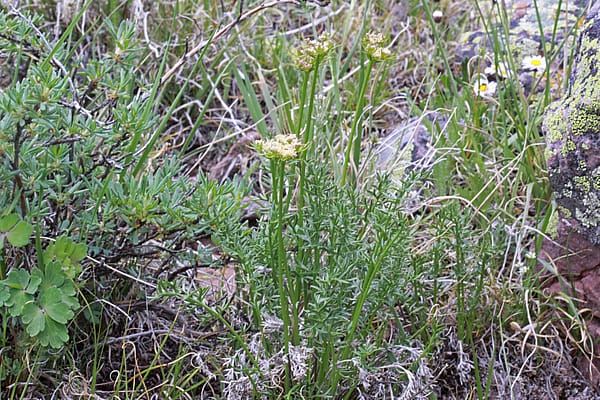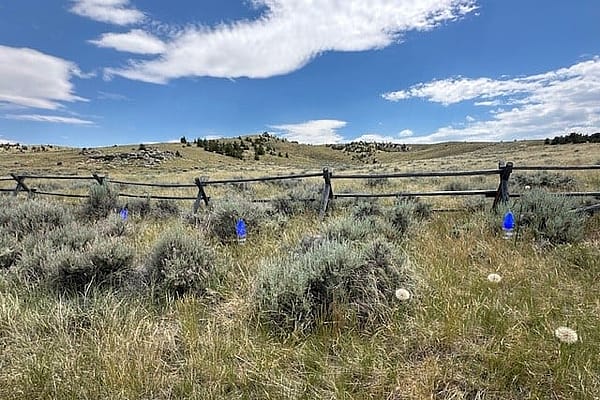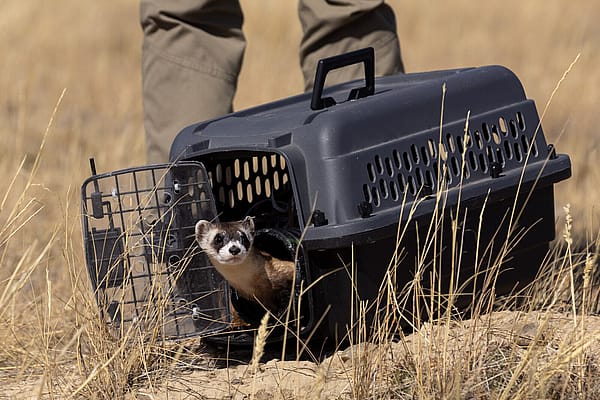
Hibernation versus Torpor
Hibernation versus Torpor: What’s the Difference?
by Brandon Lewis and Amy Phillips
Winter is a difficult time to survive for many animals. Mule deer in Wyoming, for example, have an average winter mortality rate of 20%. The winter of 2023 saw repeated snow-melt cycles that caused layers of ice to form on the snow making it impossible for herbivores to break through and causing a loss of up to 80% of pronghorn in some areas of the state. With stats like that, wouldn’t you rather just skip the whole season entirely? For some animals, that is exactly what they do.
Hibernation and torpor are two ways animals can survive the toughest winter conditions. What’s the difference? You can think of hibernation as long-term torpor. During torpor, animals enter a state of lowered heart rate, body temperature, and metabolism for a short period. This state is entered involuntarily, meaning that when conditions become too harsh, an animal’s body forces it into a state of reduced activity. Badgers, skunks, pine martens, and prairie dogs can all be seen foraging during the winter until really cold weather forces them to enter this stage of deep rest. When the temperature improves, animals come out of torpor and go about their business! Torpor can last anywhere between several hours to several weeks.
The hummingbird species provides a good example of torpor. Once the sun goes down at the end of the day, temperatures decrease. Hummingbirds, having little body mass, conserve their energy and fat stores by entering torpor overnight, then exit it at or after sunrise the next day. This decreases the energetic cost they would otherwise have to maintain body temperature at night. However, if the hummingbird remains in torpor in cold weather for too long, it can die. This is one of the reasons they migrate to warmer climates, in addition to going where food is more available.
In contrast, hibernation is essentially a prolonged state of torpor. Both grizzly (Ursus arctos horribilis) and black bears (Ursus americanus) will go into hibernation. As fall begins, bears become more active as temperatures cool and winter approaches. They enter a state of hyperphagia– a phase where they eat almost non-stop to gain 2-3 pounds a day and increase the fat reserves in their bodies. During this time, bears can consume up to 20,000 calories a day, sacrificing sleep to focus on eating. Bears may wander outside their usual ranges in search of food and are more visible to humans. Hikers during this time should be extra cautious as encounters with bears are more likely during this feeding frenzy period. For female bears (sows), their ability to eat enough during this period affects whether they will successfully become pregnant.

In the Greater Yellowstone Ecosystem, grizzly and black bears enter hibernation in October and November, depending on weather conditions. Hibernation in bears is a survival strategy during winter when food is scarce. During this phase, bears enter a prolonged state of torpor with lowered heart rate, body temperature, and metabolism to conserve energy. They don’t eat, drink, or pass waste during this time, relying on the fat they stored up in the fall to sustain them. Though they appear inactive, bears can still wake up if disturbed. Females even give birth and care for cubs while hibernating. Bears typically hibernate 5 months before emerging from their dens to feed on fresh spring grasses and winter-killed carcasses.
Smaller mammals, such as yellow-bellied marmots and some species of bat, also hibernate. While these hibernating mammals may miss the worst of winter, they still face threats. Hibernating bats, such as the Little Brown Bat (Myotis lucifugus), are threatened by white-nose syndrome which can cause them to wake up during hibernation. You can read a blog on white-nose syndrome in Wyoming here. Climate change is another threat to hibernators, causing them to enter hibernation too late or emerge too early, before food resources are available.

When you think of torpor think of a short, involuntary deep rest that comes about because of external conditions—for example, extremely cold weather. Hibernation is a prolonged period of torpor that animals prepare for by going through a phase of hyperphagia.
Written By
Amy Phillips
Amy Phillips brings seven years of experience in the cultural heritage field to her position as Curatorial Assistant at the Center of the West's Draper Natural History Museum. She is the co-Principal Investigator on the “Bison of the Bighorn Basin” Project, which employs faunal analysis to learn about past bison ecology in the geographic Bighorn Basin using more than 100 bison crania sourced by community engagement. Amy also serves on the Society of American Archaeology Public Outreach Committee and as an appointed member of the Park County Historic Preservation Commission. She has research interests in the relationship between humans and their environments in the past and present, taphonomy, and bison ecology. Amy is currently pursuing her Master of Science in Cultural Resource Management, Archaeology from St. Cloud State University.











